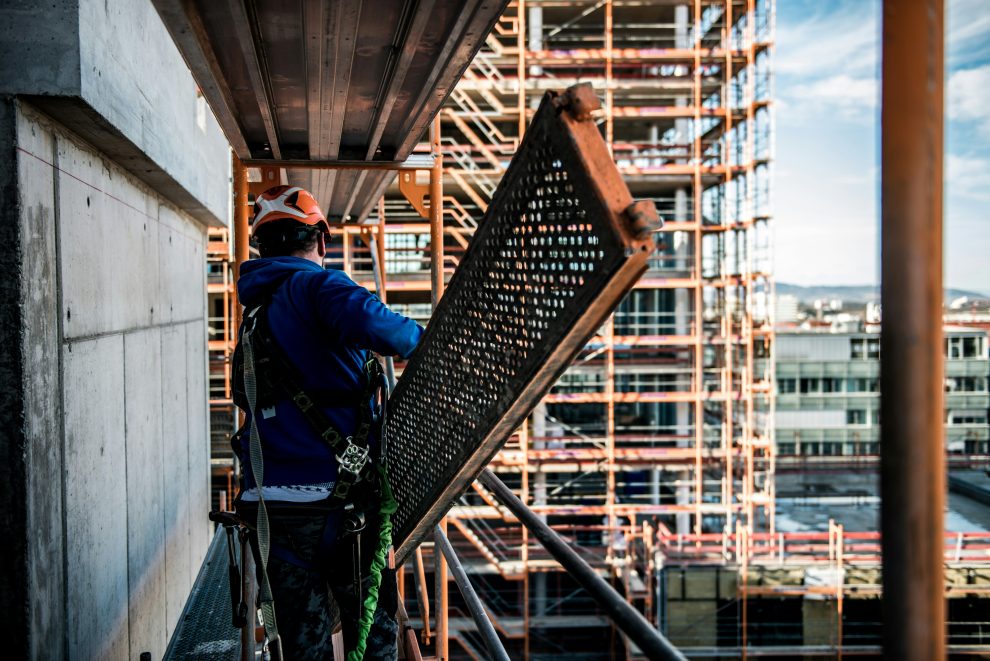They are an unsightly intrusion in the cityscape. Pedestrians cross the street to avoid them, while others find shelter from brief summer rainstorms. Merchants and restaurants say they can reduce business. We’re talking about building scaffolding, which seems ubiquitous in midtown Manhattan and many high-rise residential areas.
After years of public frustration and anger, the City Council recently passed a package of fi ve bills geared to limit the time the structures are up, improve their look and open the door for changes in the city’s Local Law 11, which mandates periodic safety inspections of building façades.
“Ask any New Yorker and they’ll tell you: sidewalk sheds are the permanent guest that never leaves,” said Council Member Erik Bottcher in a statement.
There are currently over 8,400 scaff olding structures in New York City, according to city estimates. The majority are concentrated in Manhattan, and the average age of scaff olding in New York City is over 500 days — 334 scaffolding structures have been in place for more than five years.
The package of bills:
• Requires the Department of Buildings (DOB) to recommend new sidewalk shed designs to the council by September 30, 2025. The legislation allows more color options for sheds, requires corresponding construction fences to match the color of the sidewalk shed, increases lighting beneath sidewalk sheds and raises the minimum height of sheds from eight to 12 feet, barring areas where exits, light or ventilation would be obstructed.
• Reduces the duration of sidewalk shed permits for façade repairs from one year to three months, unless the building can prove financial hardship, had problems accessing a neighboring property or had other issues impacting necessary repairs at a building. Exempt from the three-month timetable are projects connected to demolition, a building alteration or new building construction.
• Creates new penalties for property owners who delay repairs for sidewalk sheds occupying the public right-of-way. Penalties would begin with the second permit renewal and increase based on the size and age of the shed. When renewing a shed permit, owners must now provide proof of work done since the last renewal or provide documentation to explain any delays.
• Charges the DOB to review Local Law 11 and the currently mandated frequency of façade inspections, and recommend changes by December 31, 2025. This bill sets parameters to extend the inspection cycle from the current five-year interval to a longer time between six to 12 years, and delay the first required inspection for new buildings from five to nine years. Owners who identify unsafe conditions during inspections of building façades will have five months to submit construction documents, eight months to submit necessary permit applications and two years to fully conduct façade repairs or be liable for penalties.
• Doubles the required level of lighting under sidewalk sheds with LED lights.
• Introduces penalties for failure to submit construction documents to DOB within five months of completion, failure to fi le necessary permit applications within eight months and failure to complete repairs within two years. Property owners would be able to seek extensions by submitting documentation proving delays are unavoidable.
The new scaffolding package is the latest in a series of legislation passed over the years. The fi rst such bill dates from 1885, the same year the Statue of Liberty arrived in New York Harbor. The bill established safety standards for workers and liability for owners. It has been followed by other legislation regulating the construction of scaffolding and safety issues.
While there have been ongoing efforts to revise the law, the Scaff olding Law of 1885 has retained much of its intended purpose and was last amended in 1969. There apparently is no similar law in the country that seeks to protect construction workers faced with the inherent dangers of the job.
Early scaffolds were primarily made of wood and used for building and repairing structures. Over the years, the introduction of metal scaff olding in the early 20th century improved safety and durability as the construction boom in the 1920s and 1930s led to more complex scaffolding systems to supporttaller buildings.
Today, scaffolding is often made from steel and aluminum, offering greater strength and flexibility.
Ira Meister
President and CEO
Mathew Adam Properties Inc.
375 Pearl St., 14th Floor
New York, NY 10038
imeister@matthewadam.com
(212)699-8900




















